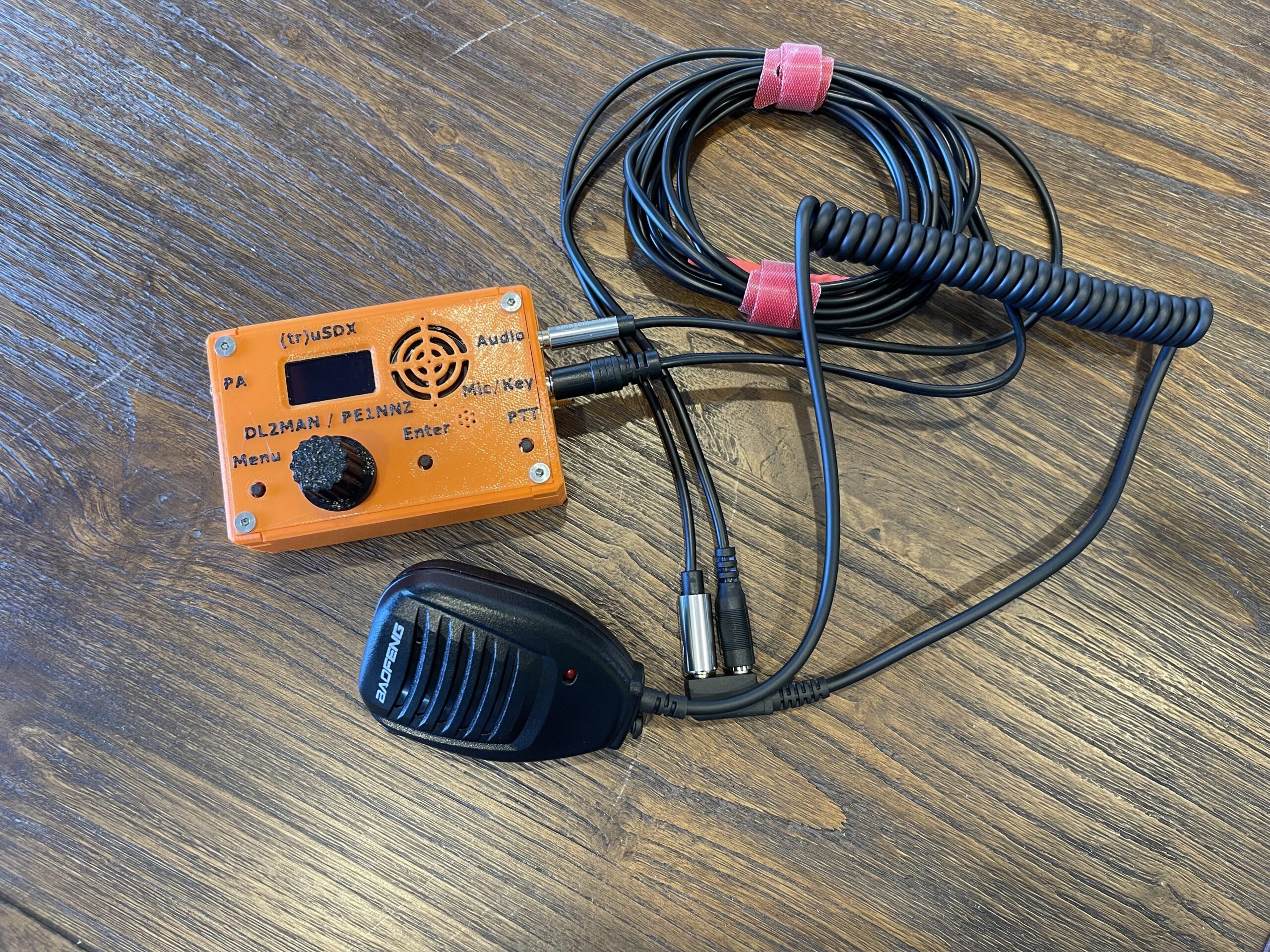
Speaker Mic Adapter for the (tr)uSDX
The (tr)uSDX has a built in speaker and microphone for phone (voice) for SSB, AM, or FM modes. The speaker works quite well for its size as well as the built in microphone. However, the volume limits of the internal speaker and having to talk very close to the internal mic can be a bit inconvenient if you use phone mode often in a portable situation.
I’ve seen a few videos and read articles for modified speaker mics for the (tr)uSDX. While these have proven to work well, I didn’t want to dedicate a speaker mic to the (tr)uSDX, but instead I wanted to be able to use any K1 style speaker mic using an adapter. This would allow for easier experimentation between several speaker mics if needed. Also, this would allow for lighter packing of items for portable use – a single speaker mic for several HTs and the (tr)uSDX.

The K1 style speaker mic connectors comprise of one 3.5mm 3 conductor connector next to a 2.5mm 3 conductor connector (or 2 conductor). I referenced the pin outs of the Baofeng style connectors and the (tr)uSDX to map out the appropriate connections needed.

I purchased a few cheap extension cables from Amazon, both a 2.5mm “stereo” extension and 2 3.5mm “stereo” extensions. This provides 3 conductor connection possibility on both ends. These extension cables provide both a socket and plug for each. The sockets can be placed onto the Kenwood speaker mic plugs and the plug end of the extensions can go into the (tr)uSDX.

My plan was to cut these extension cables and make the appropriate connections, solder them up and place shrink wrap over the patched area.

The result worked quite well. I have audio output from the speaker mic and the microphone works as well as the internal mic.
SSB Audio Tuning
For those like me who jumped into the (tr)uSDX with CW as the primary use and SSB as a bonus, I didn’t pay much attention to various settings within the menu of the rig.
DL2MAN published a video on youtube for operating the radio which is incredibly helpful because there’s currently no user guide with detailed explanations on the settings in the menu.
I’ve always had audio trouble with the (tr)uSDX on SSB because I started using it for CW and FT8 first. I may have changed some settings in the process of getting the rig working well on FT8.
When beginning to experiment with SSB and listening to my modulation with a nearby radio, it was badly distorted. I learned that the settings most relevant to fixing this were the menu settings for TX Drive and Noise Gate. In my case, for the baofeng speaker mic, a TX Drive setting of 4 (the default) was critical in clearing up the distortion in SSB. Further, a Noise Gate of 6-8 improved the modulation even more.
These settings need to be adjusted for any microphone, including the internal microphone. it’s best to use an SDR or rig that can record your test transmissions into a dummy load. This way you can play back each recording and pick out the settings that work best.
It should be noted that the BW Filter menu setting affects transmitting in addition to receiving. Adjusting this setting can improve the SSB quality quite a bit as well.
First Contact
A nearby amateur KD2YCK helped me test this rig on FT8, SSB, and AM, as well as provide some feedback on ideas for troubleshooting the audio issues I was having. As is most often the case, reading the manual, forums, or videos on the subject are advisable.
KD2YCK tipped me off to a school radio club operating on 20 meters, the Falcon Radio Club, N2FRC, from NC. I tuned in on the (tr)uSDX and heard the station at an S9+, threw out my call sign a few times and got a reply! A successful SSB contact on this QRP rig was exciting. Hoping for my first CW contact soon.
